Digital Anatomy Printing (DAP) brings medical models to life with incredible realism that accurately represents both the appearance and response of human tissue. These 3D printed anatomical models provide unmatched clinical versatility, repeatability, and accuracy for healthcare professionals and medical device companies
Revolutionize Medical Training and Treatment with Digital Anatomy Printing
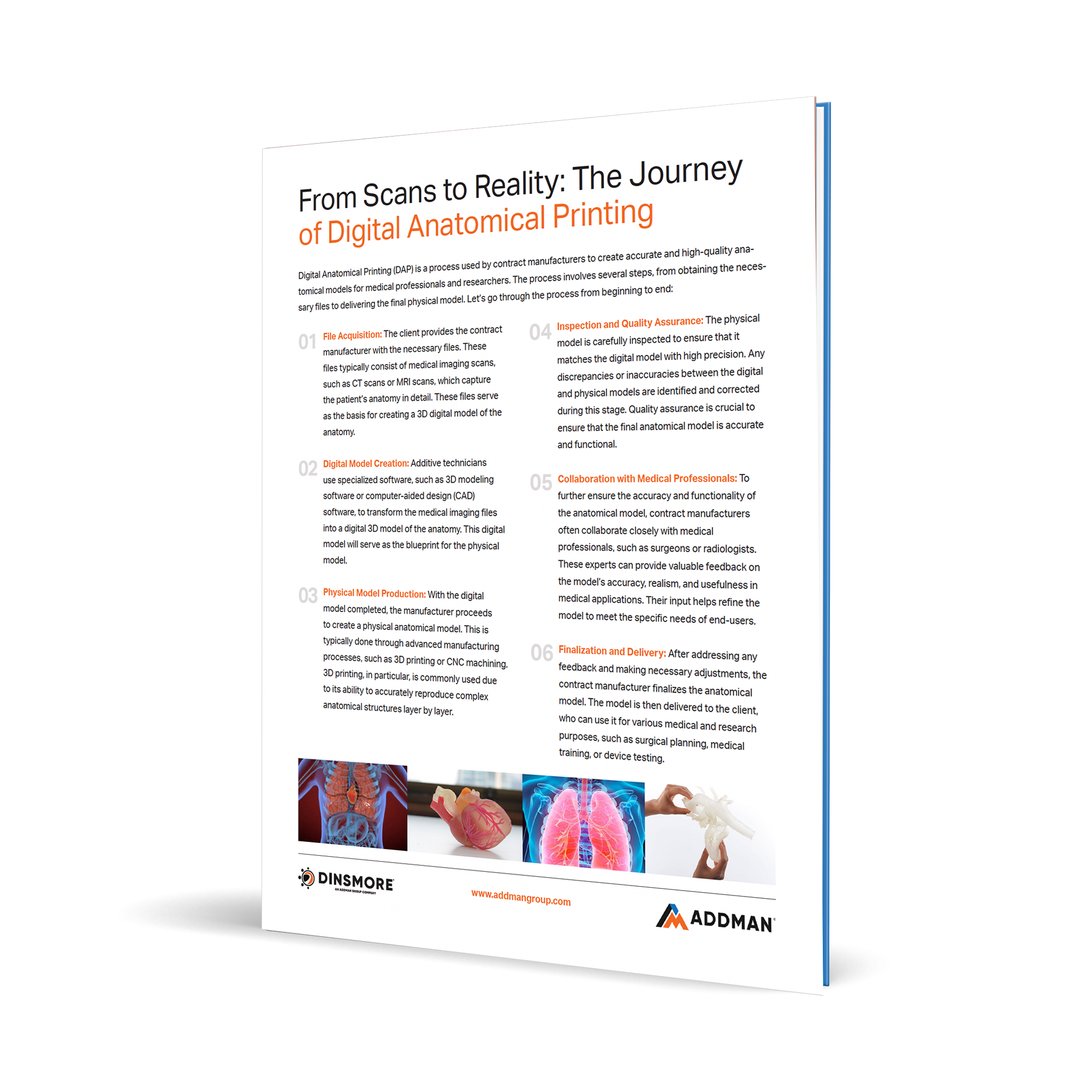
What is Digital Anatomy Printing?
Digital anatomy prints are three-dimensional models of human anatomy that are created using digital data and polymer 3D printing technology. These models provide a highly accurate and detailed representation of the human body, allowing medical professionals to better understand complex anatomical structures and prepare for surgical procedures.
Different types of polymer 3D printing technologies, such as stereolithography (SLA) and fused deposition modeling (FDM), can be used to produce these prints, depending on the requirements of the model and the desired level of accuracy and detail. The process involves several steps, from obtaining the necessary files to delivering the final physical model.
Let’s go through the process from beginning to end:
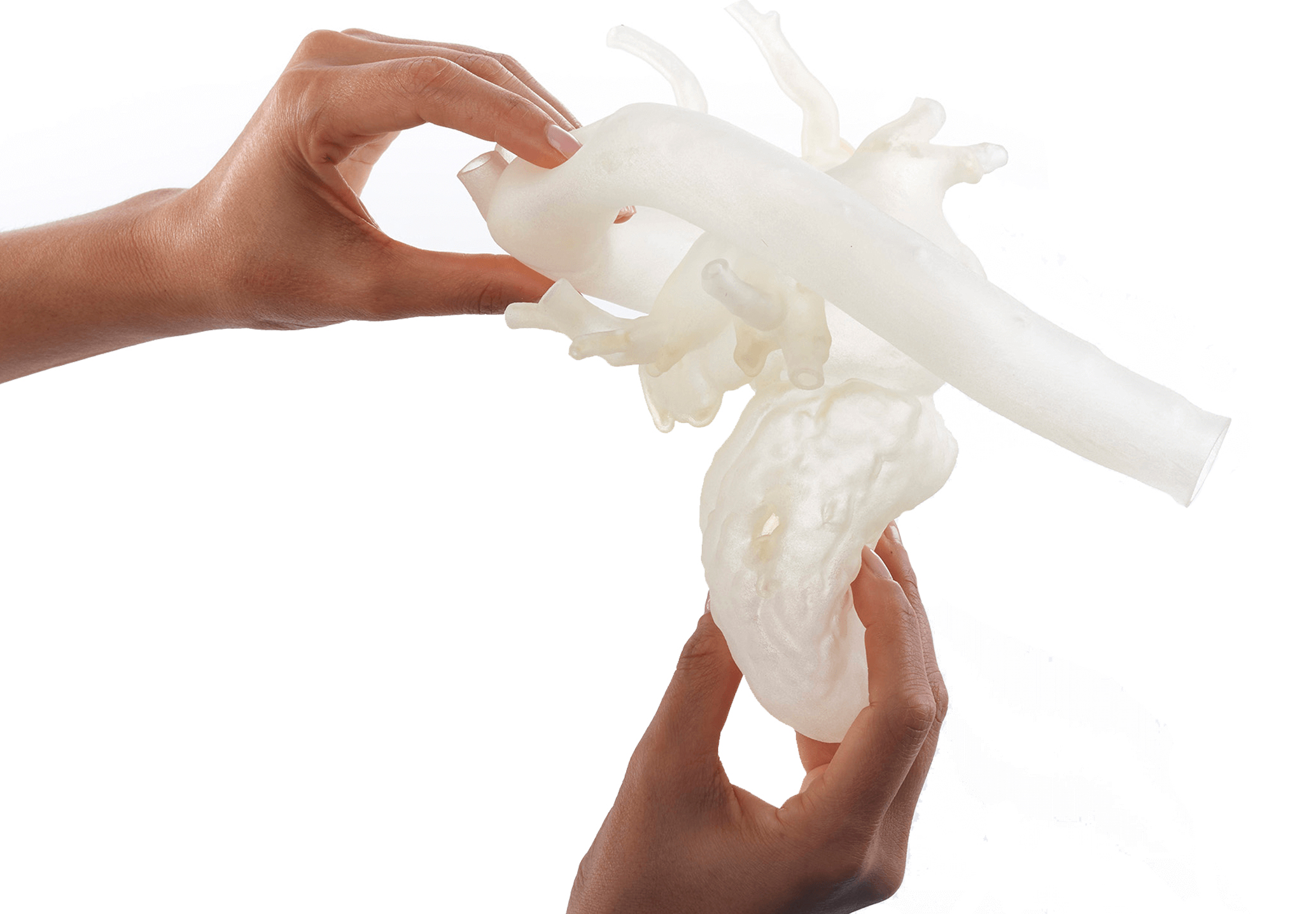
Why Digital Anatomy Printing?
These models are highly beneficial for training and preparation purposes, aiding in the diagnosis and treatment of complex medical conditions. By using these accurate and detailed models, companies can enhance the development and testing of their products, ensuring they meet the highest standards of safety and effectiveness. Additionally, medical professionals can use these models for surgical training and preparation, reducing the risk of complications and improving patient outcomes. Overall, digital anatomy prints provide a powerful tool for medical device companies looking to advance their research and improve the quality of care for patients.
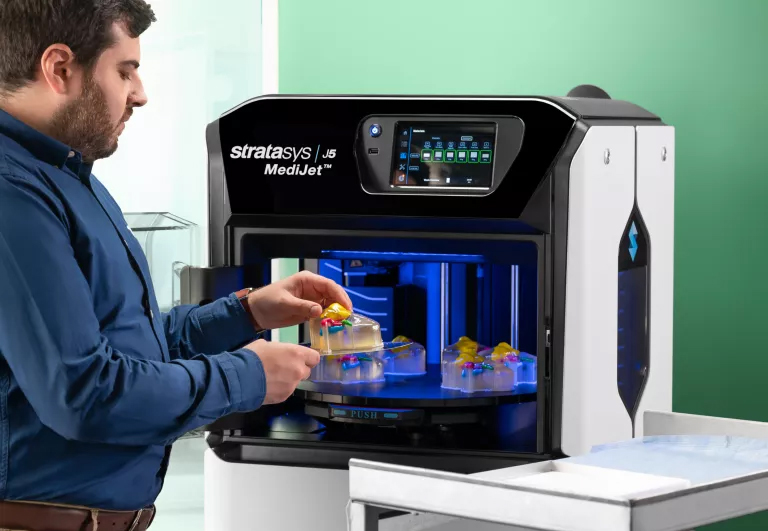
Setting the Benchmark for 3D Medical Printing
Achieving precise 3D outputs requires accurate segmentation, and we ensure this through our strategic partnership with Axial 3D. Axial3D INSIGHT, an FDA-cleared, cloud-based, AI-driven segmentation platform, converts 2D images into high-quality 3D digital files or anatomical models with exceptional precision and efficiency. Using industry-leading Stratasys 3D printers, we produce 3D printed models of your patient’s anatomy with remarkable detail and accuracy. This solution leverages advanced machine learning algorithms for superior segmentation, creating lifelike representations that meet the highest standards of quality.
Common Materials Used
Acrylonitrile butadiene styrene (ABS): This is a strong and durable polymer commonly used in fused deposition modeling (FDM) technology, making it ideal for producing robust digital anatomy prints that can withstand frequent handling or use.
Polylactic acid (PLA): PLA is a biodegradable polymer that offers high-resolution printing capabilities, making it a popular choice for creating detailed digital anatomy prints. It is commonly used in stereolithography (SLA) and digital light processing (DLP) technology.
Polyvinyl alcohol (PVA): PVA is a water-soluble polymer often used as a support material for complex digital anatomy prints, as it dissolves easily and leaves no residue behind.
Polyethylene terephthalate glycol (PETG): PETG is a transparent and strong polymer that is commonly used to produce clear digital anatomy prints, making it an ideal material for creating models of transparent anatomical structures, such as blood vessels or the digestive system.
Nylon: Nylon is a strong and flexible polymer that can produce digital anatomy prints with high tensile strength, making it suitable for creating models of anatomical structures that require flexibility, such as joints or ligaments.
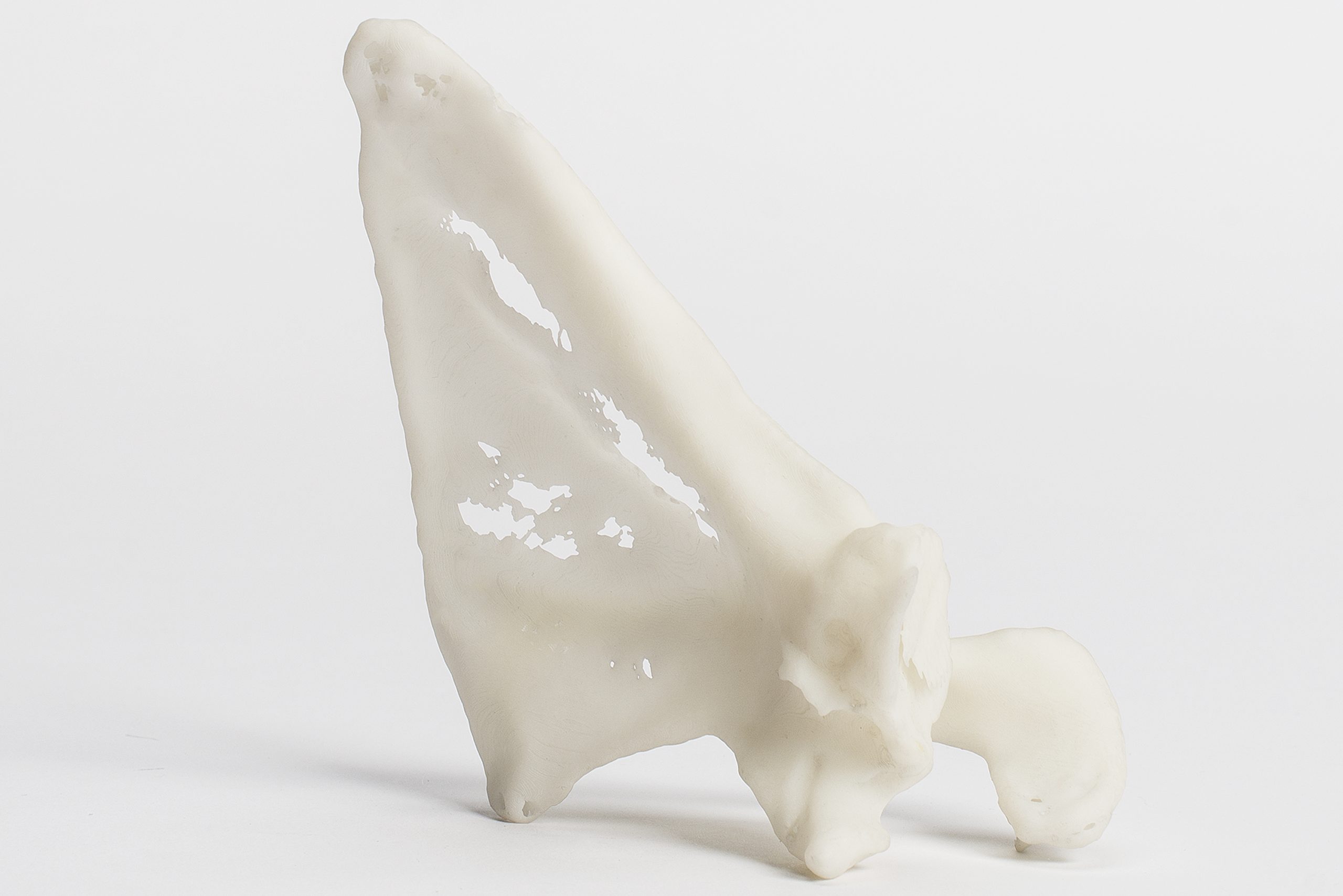
3D Printed Shoulder Bone for Hoag Hospital
Our 3D printing service provided doctors at Hoag Hospital in Newport Beach with an opportunity to conduct a trial run before an upcoming operation, which even experienced surgeons sometimes wish for. The doctors were tasked with completing a successful bone graft on a hole in a patient’s shoulder blade, for which they only had X-ray data available. This presented a unique challenge as the hole was located in a hard-to-access area.
“Dinsmore made the 3D model that allowed us to do a practice surgery and help our patient — and they got us the parts quickly.”
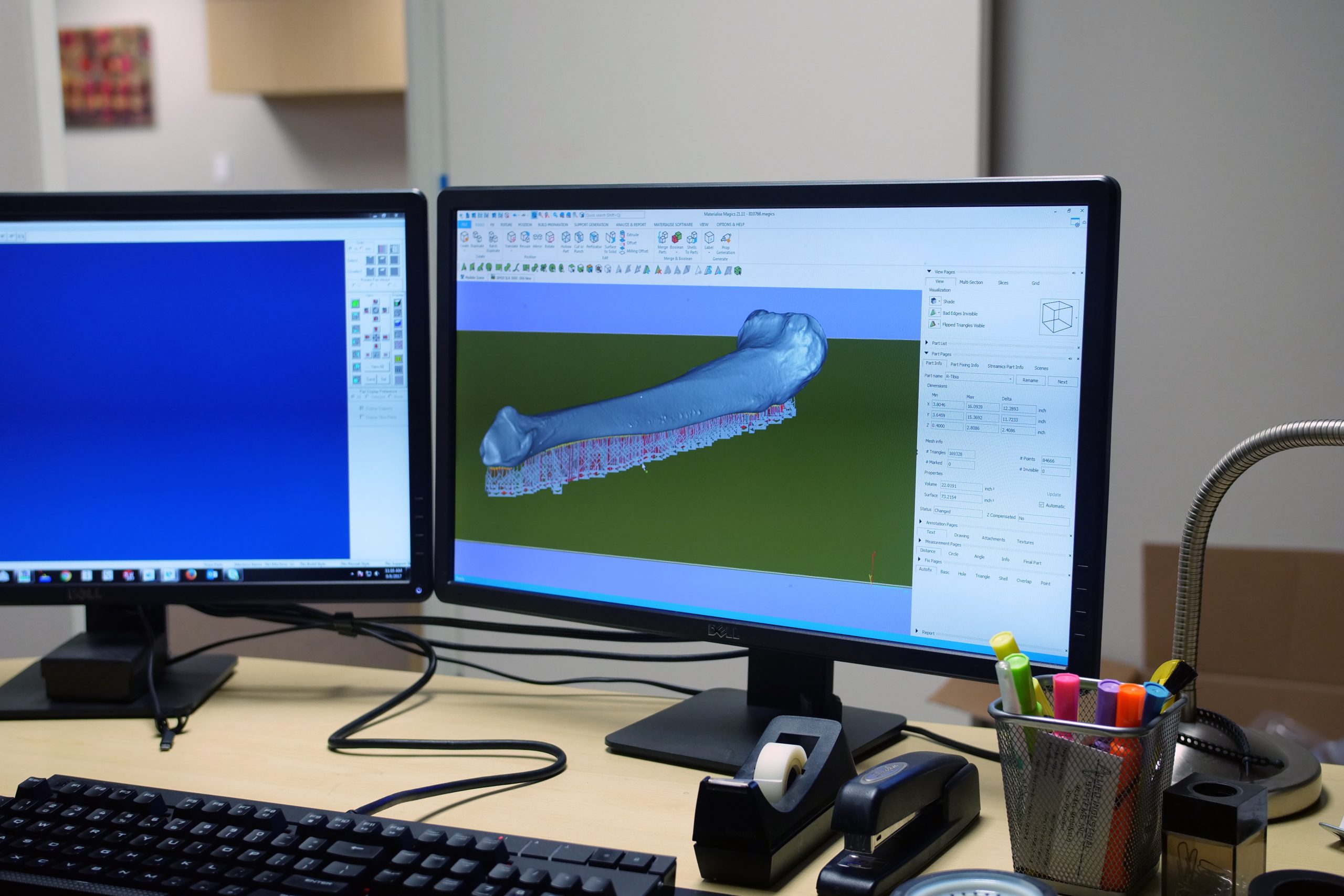
Patient-Specific Surgical Aid with SLA Technology
Recent advancements in speed and accuracy of 3D printing technologies have allowed surgeons to simulate procedures using life-size anatomical models that are created directly from a patient’s CT scan or MRI. The team at Dinsmore recently completed a patient-specific femoral bone model with the Children’s Hospital of Orange County (CHOC).
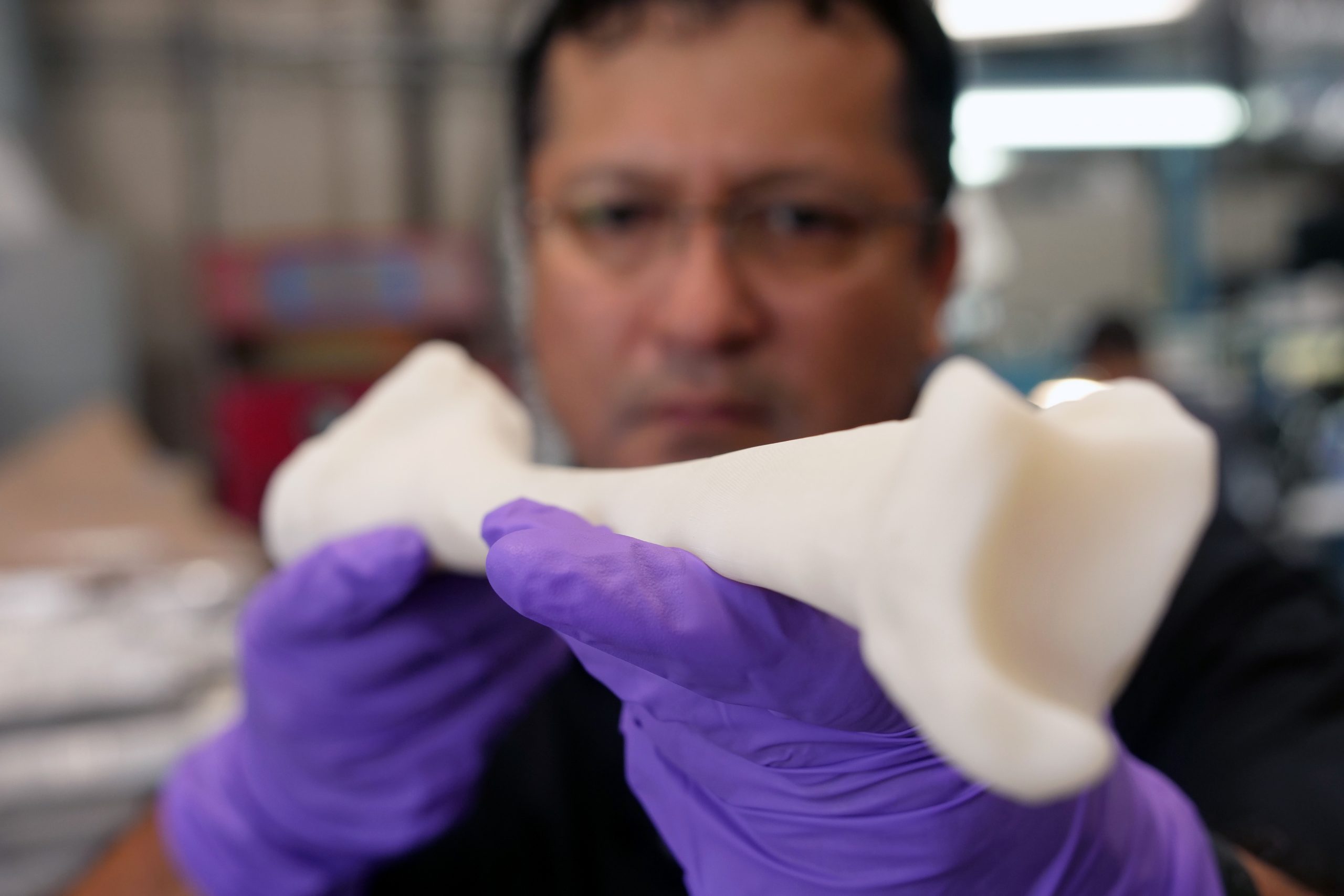
Certifications for Digital Anatomy Printing (DAP)
ADDMAN holds ISO 13485, and ASTM F2503 certifications, along with a Class 8 cleanroom, ensuring compliance in the production of medical parts.
Related Resources
Dinsmore Joins ADDMAN Group
Together, we can speed up the innovation of tomorrow. Let's talk.
The only limitation is our own imagination for what we can jointly develop. And it all begins with your story.